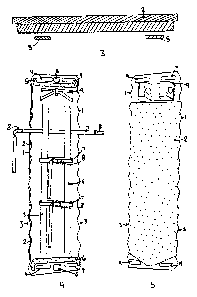Some of the information on this Web page has been provided by external sources. The Government of Canada is not responsible for the accuracy, reliability or currency of the information supplied by external sources. Users wishing to rely upon this information should consult directly with the source of the information. Content provided by external sources is not subject to official languages, privacy and accessibility requirements.
Any discrepancies in the text and image of the Claims and Abstract are due to differing posting times. Text of the Claims and Abstract are posted:
| (12) Patent Application: | (11) CA 2740049 |
|---|---|
| (54) English Title: | UNIVERSAL SPINAL BOARD |
| (54) French Title: | PLANCHE DORSALE UNIVERSELLE |
| Status: | Deemed Abandoned and Beyond the Period of Reinstatement - Pending Response to Notice of Disregarded Communication |
| (51) International Patent Classification (IPC): |
|
|---|---|
| (72) Inventors : |
|
| (73) Owners : |
|
| (71) Applicants : |
|
| (74) Agent: | |
| (74) Associate agent: | |
| (45) Issued: | |
| (22) Filed Date: | 2011-05-16 |
| (41) Open to Public Inspection: | 2012-11-16 |
| Availability of licence: | N/A |
| Dedicated to the Public: | N/A |
| (25) Language of filing: | English |
| Patent Cooperation Treaty (PCT): | No |
|---|
| (30) Application Priority Data: | None |
|---|
The Universal Spinal Board is a back board designed to completely immobilize a
full
spectrum of victim ages, heights and weights. This invention significantly
reduces
movement of victims who may have suffered spinal cord injury, reducing the
risk of
further injury to the spine during the rescue procedure. Ridges along the
lateral sides of
the spinal board combined with runners along the underside of the board allow
for a
wide variance in free moving strap placement. This accommodates any body size.
A
textured foam rubber surface extends slightly beyond the rigid portion of the
spinal
board, assisting in holding straps securely. This textured foam rubber surface
also
moulds to and holds the victim in place on the board. Rubber spacers
surrounding hand
holes serve to reduce potential injury to lifesavers. The Universal Spinal
Board secures
small and large victims and aids in the comfort and safety of all users.
Note: Claims are shown in the official language in which they were submitted.
Note: Descriptions are shown in the official language in which they were submitted.

2024-08-01:As part of the Next Generation Patents (NGP) transition, the Canadian Patents Database (CPD) now contains a more detailed Event History, which replicates the Event Log of our new back-office solution.
Please note that "Inactive:" events refers to events no longer in use in our new back-office solution.
For a clearer understanding of the status of the application/patent presented on this page, the site Disclaimer , as well as the definitions for Patent , Event History , Maintenance Fee and Payment History should be consulted.
| Description | Date |
|---|---|
| Application Not Reinstated by Deadline | 2014-05-16 |
| Time Limit for Reversal Expired | 2014-05-16 |
| Inactive: Adhoc Request Documented | 2014-02-20 |
| Deemed Abandoned - Failure to Respond to Maintenance Fee Notice | 2013-05-16 |
| Inactive: Cover page published | 2012-11-26 |
| Application Published (Open to Public Inspection) | 2012-11-16 |
| Inactive: Office letter | 2011-06-06 |
| Inactive: First IPC assigned | 2011-06-03 |
| Inactive: IPC assigned | 2011-06-03 |
| Inactive: IPC assigned | 2011-06-03 |
| Inactive: IPC assigned | 2011-06-03 |
| Filing Requirements Determined Compliant | 2011-05-30 |
| Inactive: Filing certificate - No RFE (English) | 2011-05-30 |
| Application Received - Regular National | 2011-05-30 |
| Small Entity Declaration Determined Compliant | 2011-05-16 |
| Abandonment Date | Reason | Reinstatement Date |
|---|---|---|
| 2013-05-16 |
| Fee Type | Anniversary Year | Due Date | Paid Date |
|---|---|---|---|
| Application fee - small | 2011-05-16 |
Note: Records showing the ownership history in alphabetical order.
| Current Owners on Record |
|---|
| CHARLOTTE A. DONALDSON |
| MEGAN M. SMITH |
| Past Owners on Record |
|---|
| None |